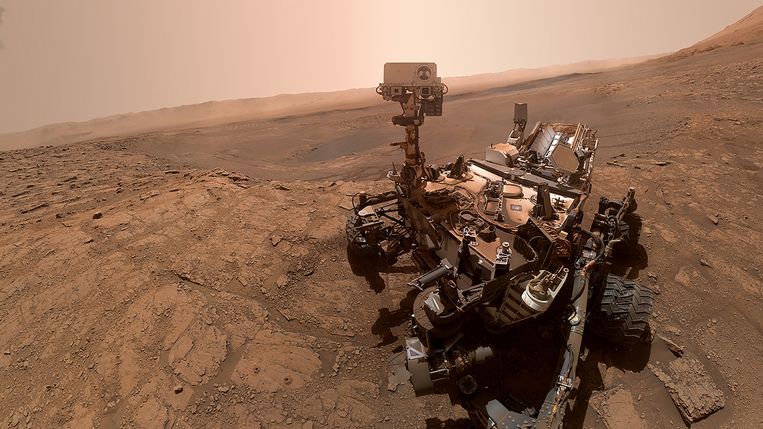Scientists have discovered patterns on Mars that you would encounter on Earth in dry mud, they wrote on Wednesday in the journal nature.
The mixture of salt crusts and mud fissures that they discovered could only have occurred with the rapid alternation of wet and dry periods. Thus, the discovery reveals that Mars may have had seasons and helps scientists reconstruct the geological history of the Red Planet. A planet, in the depths of cosmic history, may have been a blue oasis suitable for the emergence of life.
shallow lake
The new discovery comes from camera images and measurement data collected by NASA’s unmanned rover, which plunged into Gale Crater exactly 11 years ago this past weekend. There, the rover is studying water deposits that were previously spotted by a Mars satellite.
Gale Crater was formed when a large meteorite hit Mars sometime between 3.8 and 3.6 billion years ago. The impact made a deep hole in the earth’s crust, throwing stones and earth around the hole. With this new discovery, researchers can determine how it progresses. For example, Mars may have had an atmosphere, clouds, and rain for millions of years.
On the watery planet Mars, a river has made its way to the edge of Gale, according to the scenario reconstructed by the researchers. A temporary waterfall filled a shallow lake in the crater. Sand and mud from the hinterland was slowly washed into the lake. When the rains stopped, the lake dried up and the mud cracked.
Until the river started flowing again. Sometime during the next billions of years, Mars lost nearly all of its atmosphere and the lake dried up permanently. The sediment has been eroded and eaten away by the gentle Martian winds. A sediment mound was left behind, which was named “Mount Sharp”. Curiosity has been climbing this hill since 2014.
necessary for life
William Rabin, a planetary geologist and lead author of the study, thinks it’s likely that the Martian climate as a whole experienced such wet and dry cycles. “After all, there are many craters that contain similar sediments.” The main reason Curiosity did research at Gale was because it was the best place for the vehicle to land and explore a large pool of sediment right away. Rabin: “There’s about a kilometer of sediment exposed here, the result of millions of years of running water.”
Wilhelm Hack of Radboud University, who was not involved in the study, called the result astonishing. “On Earth you have the tectonic plates, so everything has already been pushed from the bottom up and there is no sediment left from before there was life. We have that now on Mars.”
Hack, who studies how the first life on Earth arose in his own research, considers the now-discovered cycle essential to the chemical precursor to life: ‘prebiotic evolution’, in jargon. I could put particles of life in a vase on my desk, but then life wouldn’t explode for millions of years. These wet-dry cycles are an example of an environment that is constantly changing. Millions of times first, then the other reaction. This is how life could have arisen on Mars.

“Thinker. Coffeeaholic. Award-winning gamer. Web trailblazer. Pop culture scholar. Beer guru. Food specialist.”







More Stories
Comet Tsuchinshan-Atlas is ready to shine this fall
Sonos isn’t bringing back its old app after all
Indiana Jones and the Great Circle is coming to PS5 in spring 2025